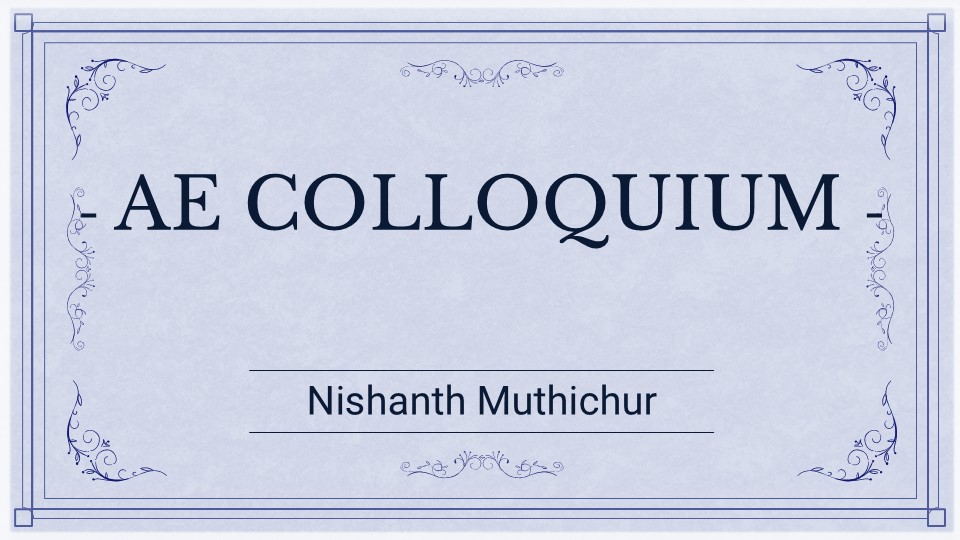
- This event has passed.
Ph.D. (Engg): Aeroacoustic sources in twin turbulent jets
December 3, 2024 @ 11:00 AM - 1:00 PM

An understanding of the aeroacoustics of twin turbulent jets is essential for applications involving noise reduction in dual engine aircrafts and launch vehicles. The aeroacoustic dynamics of these jets are influenced by the spacing between the shear layer of the two jets as well as the spatio-temporal nature of the structures arising from the interaction between the two jets. In the present work, we construct reduced-order models of aeroacoustic sources for single and twin subsonic jets ($M_j=0.9$, $Re=3600$), with the individual jets being replicas of a single jet, with the goal of accurately recovering the far-field sound over a rather wide band of frequencies St=[0.07,1.0] and directivity angles, phi = [30 deg,120 deg] within a subdecibel level accuracy. These models are designed as linear combinations of spatio-temporally coherent SPOD modes obtained in terms of the Lighthill’s stress tensor, which in turn is computed through large-eddy simulations (LES) of the turbulent jets. The present investigation involves two sets of twin subsonic jets of diameter D each, with spacings of 0.1D and 1D, where the jets merge upstream and downstream of breakdown, respectively. This is observed to alter the dynamics of twin jet evolution. The closely spaced twin jet decays the slowest due to reduced turbulent stresses which are, however, more broadband due to early merging. Such jets also show strong shielding in the plane of jets, especially at shallow directivity angles where sound levels may drop below that of the single jet. The farther spaced twin jets have dynamics that are more akin to the constituent single jet with turbulent fluctuations peaking here at St=0.34, but showing very little shielding, with their OASPL mostly linked to the nature of extra flow structures created during merging. Three-dimensional, energy-ranked, coherent structures (SPOD modes) for twin jets exhibit rather poor low-rank behaviour, especially, at the far-field spectral peak St=0.14, unlike that of the single jet, which is indicative of spatio-temporally complicated structures arising from the merging of the turbulent merging of the twin jets. At St > 0.3, the SPOD wavepackets show strong visual coherence, resembling Kelvin–Helmholtz instability modes upstream of breakdown, while at the lower frequencies there is very little spatial coherence with wavepackets peaking downstream of breakdown. Although the leading SPOD modes radiate poorly, reduced-order models using a subset of them, up to 45 SPOD modes per frequency, show for the first time remarkable match (within 1 dB) against the LES-predicted sound over 0.1 < St < 0.5, at all angles investigated, including that for the peak sound. At other frequencies, the error barely exceeds a decibel, except for the closely spaced twin jet which due to its greater hierarchy of spatio-temporal structures, show slower convergence at the shallower angles for St > 0.5.
Speaker: Nishanth Muthichur
Research Supervisor: Santosh Hemchandra